August 13th, 2021
posted
by Andrew Blomme on 8/13/2021
in
Weekly Newsletter

August 13th, 2021
White Mold in Soybeans
Pockets of white mold have been observed across our area over the past week. Sclerotinia white mold is a yield robbing disease in soybeans that forms in the cool, humid environment under the crop canopy. It is a fungus that begins as miniscule mushrooms on the soil. The picture below shows some of these mushrooms.
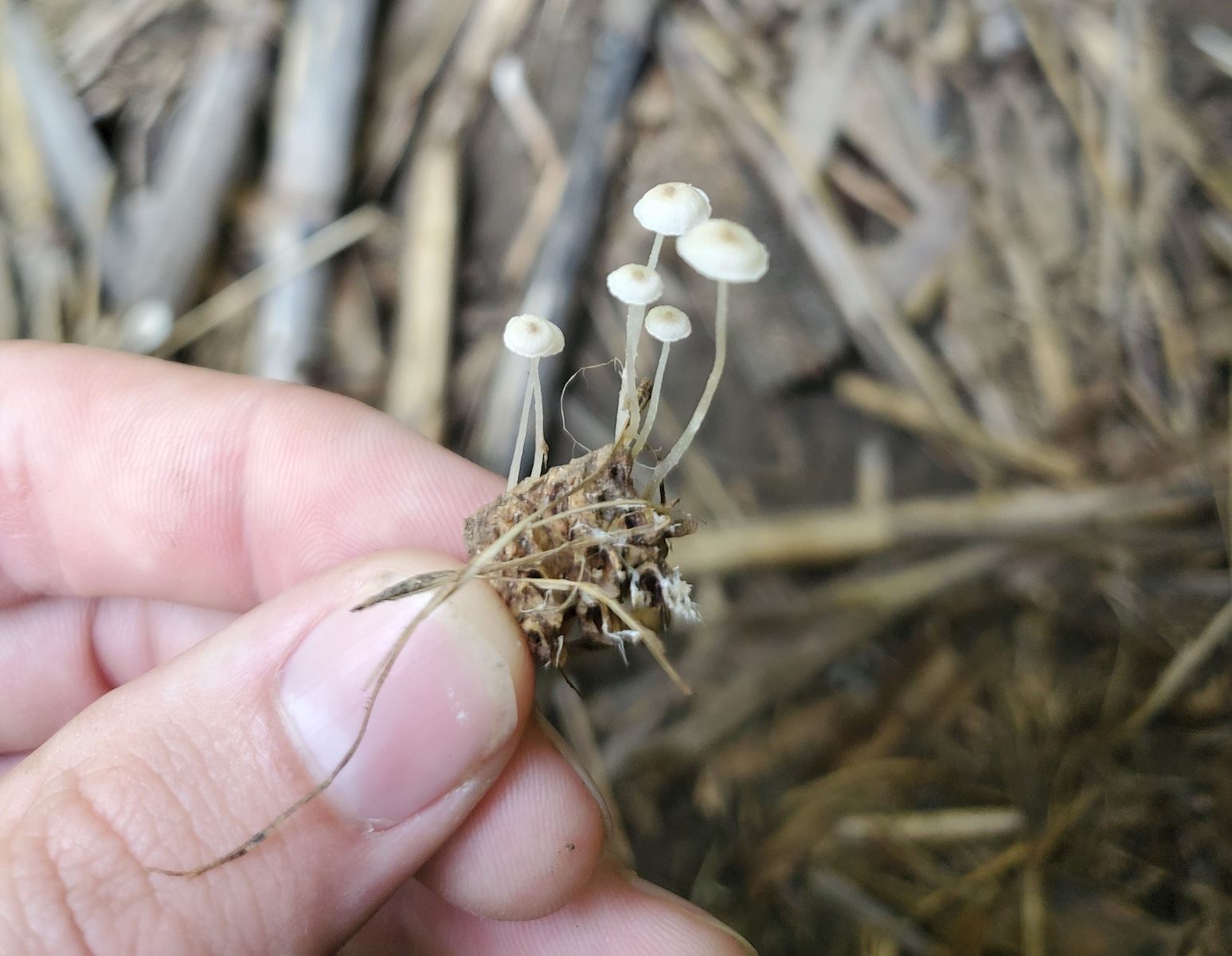
These mushrooms release spores that land on soybean stems and leaves. The spores develop into the mold that grows on the plant, shown below.
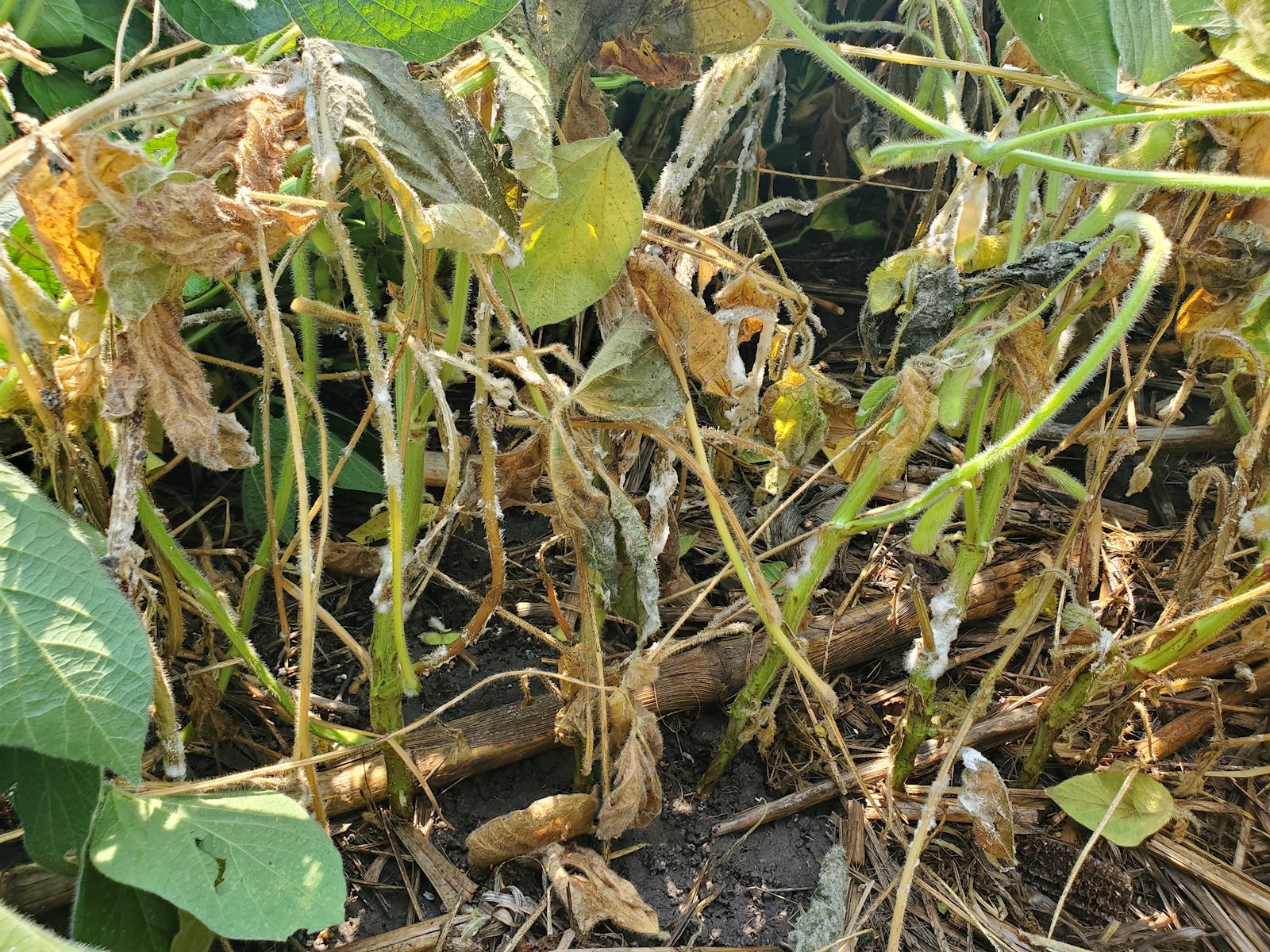
This disease typically leads to the premature death of infected plants. When the disease is intense, pockets of white mold can be observed from a distance. It is recommended to go out into the field and verify that white mold is present. Below is a picture of a pocket of white mold taken with the drone.
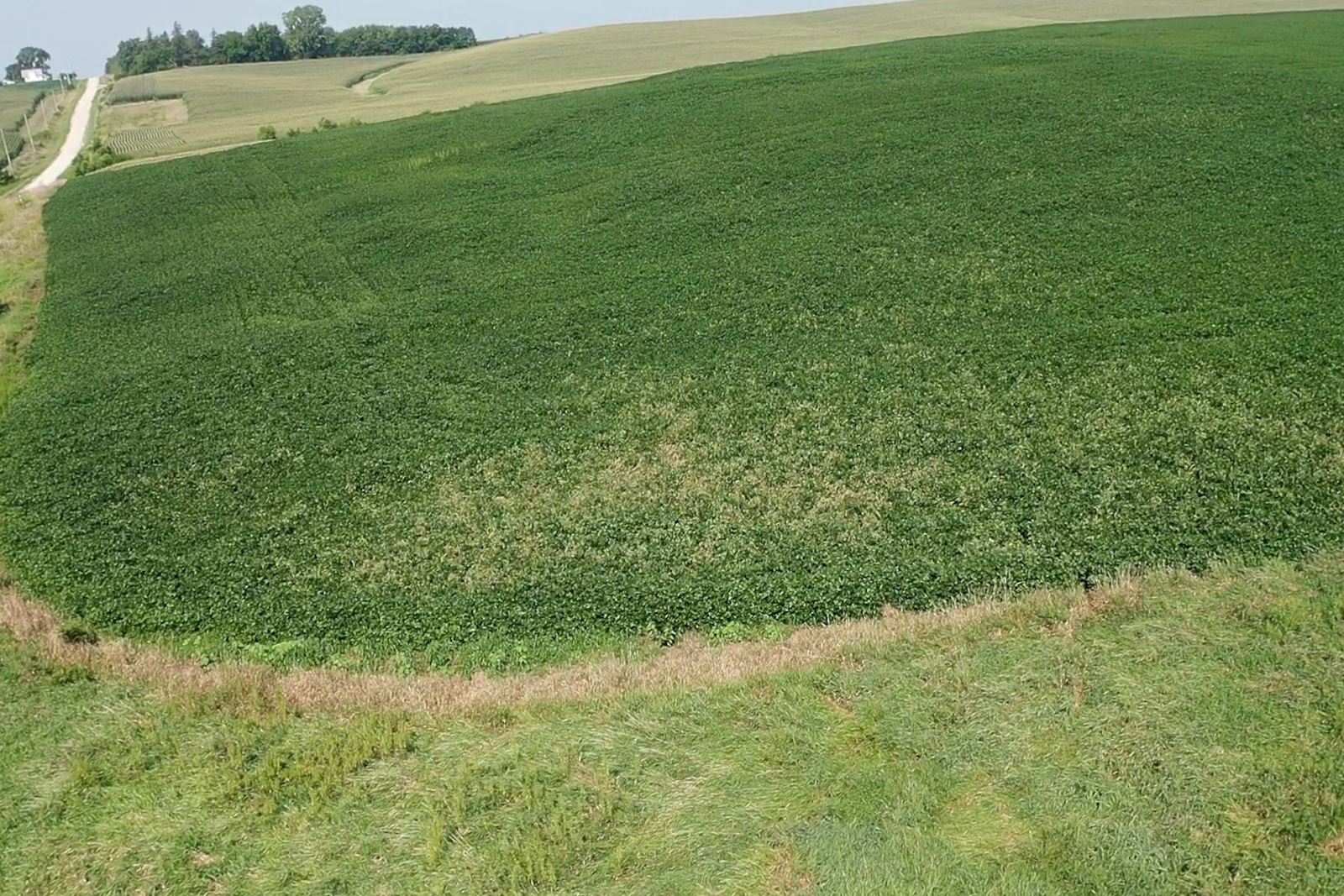
I have found white mold in Enlist, ExtendFlex, Extend, and Liberty Link traited soybeans. To say that a certain soybean trait doesn't experience this disease to some degree is a blatantly false. At the same time, different varieties of beans have different tolerances to white mold. For example, one Enlist variety may be less effected by white mold compared to another Enlist variety. Or one Enlist variety may be less effected compared to a ExtendFlex or Extend variety or vice versa. There is value in comparing how different varieties are able to handle this disease. We will be committing a lot of our time over the next couple of days evaluating different varieties across all trait platforms to determine how individual products manage this disease.
Second Hand Smoke
Wildfires in the western US have been introducing a large amount of smoke to our air and atmosphere since late July. The map below shows the active wildfires in the US and the associated smoke fallout. The amount of smoke in our air over the past 2-3 weeks have made me wonder if this is effecting the amount of solar energy that our crop has been receiving.
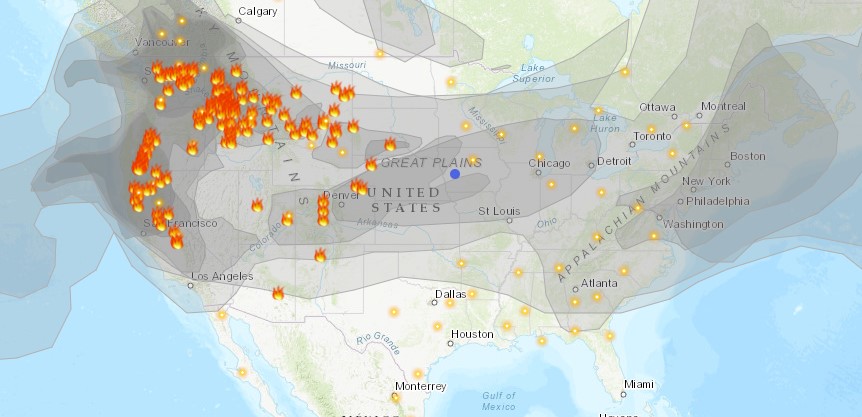
Particles in the air negatively effect the amount of solar radiation that gets from the Sun to the surface of the Earth and the crops on it. Radiation from the sun follows a straight line path from the big ball in the sky to Earth. When particles in the air (water, dust, smoke, etc) get in the way of this path they absorb this solar radiation and then "scatter" that radiation out randomly. Some of the energy gets scattered towards Earth, some of it gets scattered back towards space, and some of it gets scattered towards other particles. The more particles in the air, the more this scattering happens and the more energy gets redirected away from it's original target of Earth. This is the theory, but we can also verify this through recent meteorology data.
Iowa State University has stations that track daily solar radiation received in an area. The graph below shows the data for the station in Ames. This graph shows the amount of megajoules (a unit of energy) received per calendar day from solar radiation. The brown curve in the graph shows the amount of solar radiation that a full day of unimpeded sunlight would have for that specific day. The brown line is curved because the days are longer in June compared to December and the sunlight is more direct in the summer compared to the winter. The green lines are the actual amounts of solar radiation received on that day for 2021.
Focus on the graph from late July to today. There is a noticeable spread between the green lines and the top of the brown curve for the past 15 days. The red line helps point out this deficit. We have had several clear, sunny day during this period so we would expect several of those green lines to be really close to the top of the brown curve but the data does not show this.
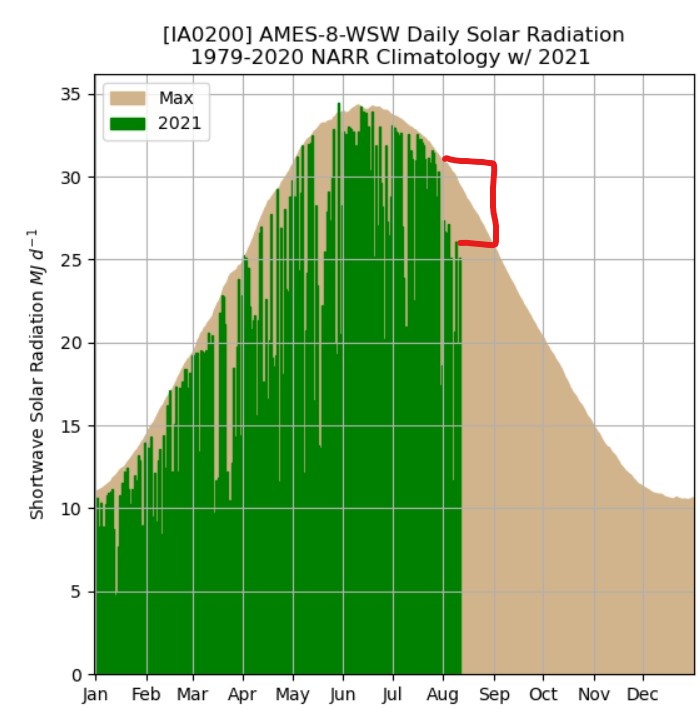
It seems clear that the amount of solar radiation we have received over the past 15 days is lower than typical due to factors hundreds of miles away from us. I would like to mainly attribute that to the amount of smoke particles in the air and atmosphere. Will this effect the corn crop as it continues its grain fill period? I highly doubt it. This is just a very unique instance that shows how even the simple processes in crop production, like getting sunlight to a crop, can be effected by multiple different factors.